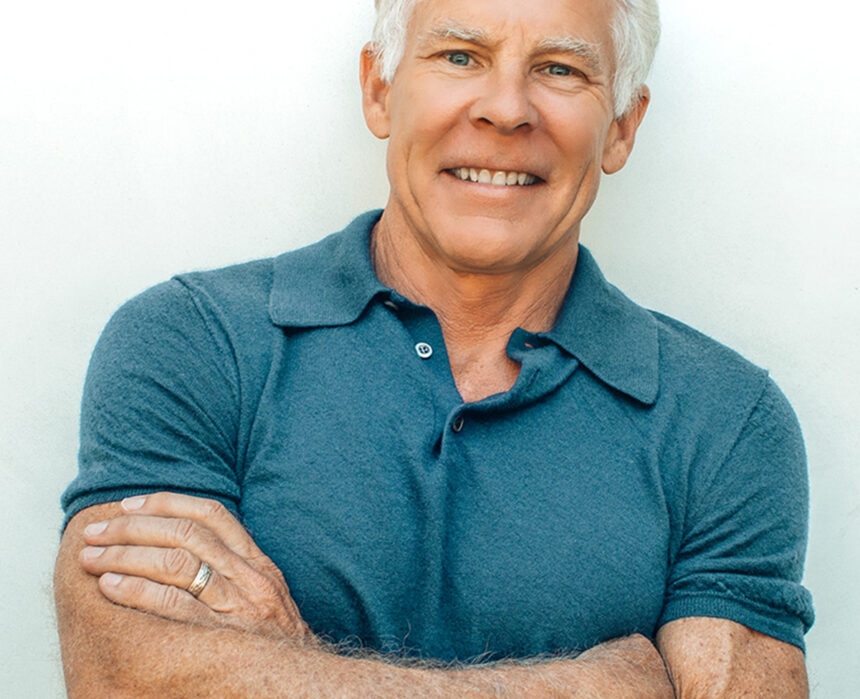Industry advisors told Primal Kitchen co-founder and CEO Mark Sisson that he was “crazy” to try selling jars of mayonnaise for nearly $10 each, he says.
The food blogger took the risk anyway, launching his paleo condiment and dressing brand in 2015 due to “a combination of naivete and hubris on my part,” says Sisson, 71.
Though Sisson’s inexperience in the condiments business was a drawback, Primal Kitchen had a different significant advantage. Around 3.5 million people each month were reading his blog about fitness and nutrition, Mark’s Daily Apple, when he launched Primal Kitchen, Sisson estimates. He’s also a The New York Times best-selling author of books like 2009′s Primal Blueprint, which promotes the paleo diet and lifestyle.
Many followers already came to him to buy vitamins and supplements — the business brought in between $7 million and $9 million a year under the Primal Nutrition brand he founded in 1997, according to Sisson. (CNBC Make It was not able to independently verify the figure.)
“I spent [over] 10 years building a platform before I had a product to launch,” Sisson says. That made unveiling Primal Kitchen “a lot easier.”
Would people buy paleo-style condiments like mayo?
Primal Kitchen’s first product was mayo made from avocados — without any of the processed and artificial ingredients, added sugars, or soybean and canola oils often found in most mass market mayonnaise brands at that time, the company says.
Sisson and his co-founder, Morgan Zanotti, were far from certain that the condiment would actually sell.
“It was kind of an entrepreneurial experiment,” says Zanotti, who served as Primal Kitchen’s president until 2024. “We thought, ‘Look, we want this product. We’re going to test the market and see if other people want it. And, if they do — great, we have a business. If not, we shut it down.’”
The cost was less important than making a mayonnaise that worked with the paleo diet, Sisson says. “Rather than start with a price point and back our way into ingredients and figure out the compromises that we would need to make … [I said,] ’Let’s build the best possible product, and we’ll price it [once] we know that it contains no bad ingredients, that it tastes great,” Sisson recalls.
When their initial run of 12,000 units sold out in only a week, Sisson and Zanotti knew they had found an untapped market. Three years later, after adding other successful new products like ketchup and salad dressings, Sisson sold the business to Kraft Heinz for roughly $200 million. He and Zanotti continue to serve the brand in advisory roles.
Launching Primal Kitchen ‘required tremendous amounts of capital’
Primal Kitchen may have started as an “experiment,” but it still required some serious funding to get off the ground.
Sisson was “netting between $2 and $3 million a year” from his supplements business, he says, and he put aside $2 million total to launch this new endeavor. That money went toward researching and developing recipes and then producing the initial runs of mayonnaise, he says.
Buying enough avocado oil “required tremendous amounts of capital, which we didn’t have, because we were running the company [as a] break-even [proposition],” he adds.
Rather than seeking investors, Sisson opted to take out a business loan, starting a line of credit that eventually grew to $9 million, he says. Sisson was the guarantor on that loan, making him personally responsible if the company folded.
“That was a difficult thing to sleep on every night for a couple of years,” Sisson says. “That was always hanging over my head — this huge line of credit.”
Sisson had recruited Zanotti to help him run the business after meeting her at an event he hosted for his Primal Blueprint program. Zanotti, a former marketing executive for food brands like KeVita, came on board to help Sisson market Primal Kitchen, launching a social media campaign around the hashtag ”#HoldtheCanola.”
The mayonnaise started selling in February 2015, with Sisson and Zanotti “hand-packing” the first orders, she says. Within months, Primal Kitchen was on shelves at Whole Foods Market stores — regionally, at first, but nationwide within a year of launching.
They brought in $1.5 million in revenue that first year, which increased to $13 million in 2016, the year Primal Kitchen mayonnaise began selling in Publix grocery stores, according to Zanotti.
‘I had always planned on growing this business to sell’
By 2018, the year Primal Kitchen sold to Kraft Heinz, the brand reached $50 million in annual revenue, according to Zanotti.
Making that success even sweeter was the fact that Sisson and Zanotti owned nearly all of the business, having mostly eschewed outside investors to maintain control. By the time they sold to Kraft Heinz, the co-founders owned 95% of the business, with just 5% owned by family and friends who invested in the company before the acquisition.
“We didn’t raise money from other people, so we weren’t beholden to investors to show them some amazing growth [or] profitability,” Sisson says. “I think the only directive to my team was: ‘Just don’t lose a lot of money, but let’s grow as quickly as we can into these different areas.’”
Primal Kitchen benefitted from being early to the paleo trend. Similar products can be found these days at grocery stores from comparably priced brands like Sir Kensington’s and Chosen Foods. Even huge corporate brands like Kraft, also owned by Primal Kitchen’s parent company, and Unilever’s Hellmann’s now make their own avocado oil-based mayonnaises.
The global paleo food market was worth $12.6 billion in 2024, according to research from the IMARC Group consulting firm, which projects that market will keep growing to nearly $20 billion within the next decade.
The Primal Kitchen brand continues to thrive and brought in $250 million in gross retail sales last year, according to the company. This was his hope from the beginning: Sisson realized early on that Primal Kitchen would need the vast resources and distribution channels of a huge company like Kraft Heinz to reach its current level of success, he says.
“I had always planned on growing this business to sell. I was in my early 60s when I started the company,” Sisson says. “You hit a point where there’s no more that you can bring to this party that somebody else with greater access to money and distribution couldn’t do” in a much better way.






